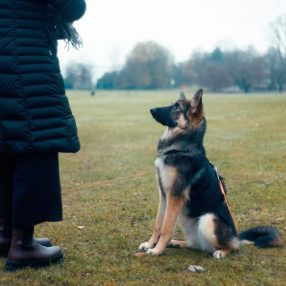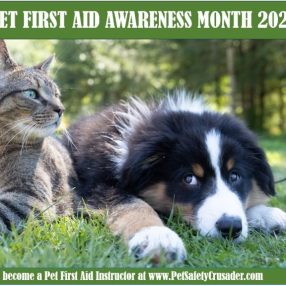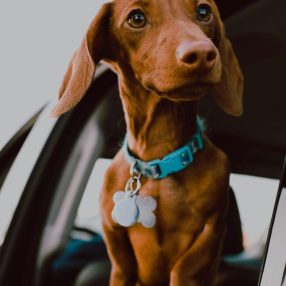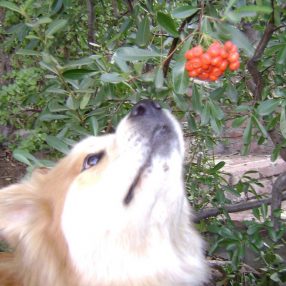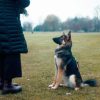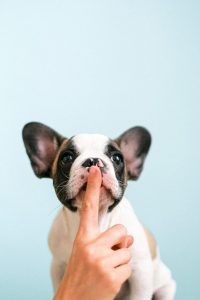
As a pet owner, you may notice your canine friend behaving strangely at times. The following is a list of some of the strangest behaviors you may encounter from your most beloved pets.
Circling Before Sitting
Another strange canine habit that we’ve all seen is a dog moving in a circular pattern before resting down. This activity piques the interest of people, who wonder why their dogs circle every time they sit. Before resting or sleeping, dogs will circle around to make the sitting space more comfortable and to check that no dangerous things such as scorpions or snakes are around. As a result, we can conclude that dogs engage in this action just to make the sitting space as comfortable as possible.
Chasing Their Tail
Another strange behavior you may observe in your dog is chasing their tail. Tail chasing can also become an obsessive compulsive behavior, and some dogs end up biting their tails, which could also result in severe damage. Never allow your dog to chase his or her tail; instead, direct their attention to other suitable games and toys.
Sniffing Other Dog’s Behinds
This is a behavior that has a simple explanation: dogs sniff each other’s backsides to greet one other. In fact, it’s the proper way to socialize. Dogs who meet face-to-face with their heads up, ears forward and/or back in a stiff stance are more prone to fight. A nice and relaxed dog will quickly move to the backside of the other dog, who would return the gesture. It’s just the way they greet one another.
Pawing At Their Owners
While barking and whimpering are the most common ways dogs interact with humans, they may also try pawing at them. Keep a tight eye on your pet if he or she exhibits this behavior. Your dog paws at you to indicate that they require something from you. They may be attempting to communicate that they are hungry and want their favorite Raw Dog Food Canada or want to poop.
Pawing might also indicate that they want you to stop doing something. For instance, if you’re playing with them and they start pawing at you, they might not be appreciating the movement or activity you’re performing with them, so please be sure to stop.
Licking Or Biting Paws
Licking paws, like many other activities, might be considered normal. However, excessive licking or chewing on paws to the point of red areas is definitely a cause for concern. These activities can be caused by a multitude of factors, including boredom, anxiety, dry skin, pain or arthritis, or allergies. Licking dry skin is a dog’s attempt to relieve dry skin. Allergies or an injury may be creating discomfort or irritated skin, prompting dogs to lick. Because there are so many possible causes of excessive licking or chewing, consult your veterinarian as soon as you discover it.
Eating Non-Food Items
Dogs eat a variety of disgusting things, including cat poop and rotten trash, as well as bugs and soiled diapers. Dogs, on the other hand, may consume inedible substances that have no enticing odor or flavor. Pica is a condition that occurs when a dog consumes foreign materials such as rocks, dirt, and other foreign objects. Pica, which refers to the devouring of non-food items and can be a sign of a variety of underlying causes. Because pica can create major medical complications such as toxin ingestion or gastrointestinal blockage, finding the source and preventing the behavior is necessary
Digging
Some dogs dig more than others, while others do not dig at all. Some dig to bury bones, while others appear to do so simply to garner attention. Other reasons for digging are: hiding objects like as bones or toys, boredom, anxiety or fear, a hunting impulse, seeking comfort, wanting to escape or get in somewhere.
Identifying the cause puts you on the path to resolving the issue. You can’t just take away all the bones and toys, and natural instinct might be a difficult habit to break. Giving them their own place to dig in works great, as does keeping them busy, exercising on a regular basis, and getting past the mind loop that they are just trying to irritate you.
Suckling
This is more common in younger dogs, but if the behavior is not stopped early enough, it can be passed down to senior dogs. However, there is usually a reason behind this behavior. The pup may have been separated from their mother very soon. While it may appear to be lovely, there have been multiple examples of dogs becoming obstructed, requiring surgery, or even losing their life as a result of a piece of the cloth falling into their mouth while suckling.
So, if you have a dog who exhibits this behavior, put a stop to it as soon as possible. When your puppy starts suckling, try distracting them with something else.
Humping
Many canines like humping people, objects, and/or other dogs. Strangely, this activity has nothing to do with canine sexual impulses. It is more likely that the dog hump to attract attention, because they are excited, or as a method for the dog to burn off energy or release stress. Humping is also a frequent dominance gesture between dogs, and it can occur when the dog humper is unsure of their position in the pack.
Reverse Sneeze
A reverse sneeze is one of the strangest sounds your dog can produce. It can be a little unsettling the first time you see or hear your dog sneeze in this manner. The dog takes a couple deep breaths and makes a peculiar snorting sound. A reverse sneeze, on the other hand, is similar to a conventional sneeze in that it is a dog’s attempt to force out an irritant in the throat or nose.
Occasional bouts of reverse sneezing are not dangerous to your dog. Nevertheless, if the reverse sneezing is severe, or if your pet is having trouble while breathing, you should have them checked out by a veterinarian.
So, the next time you notice your dog doing something unusual, you’ll probably have a better idea of why they’re doing it and what you need to do about it.


